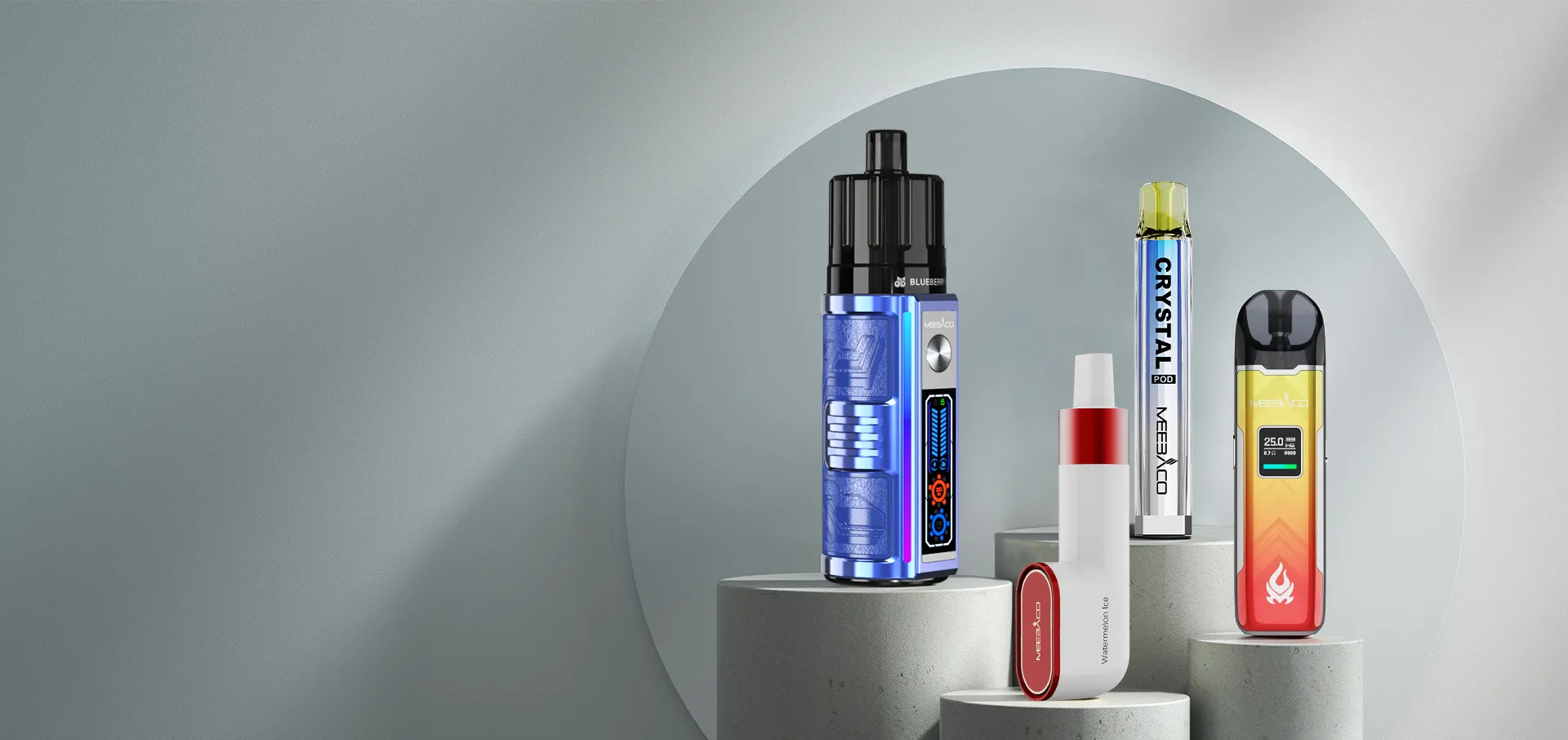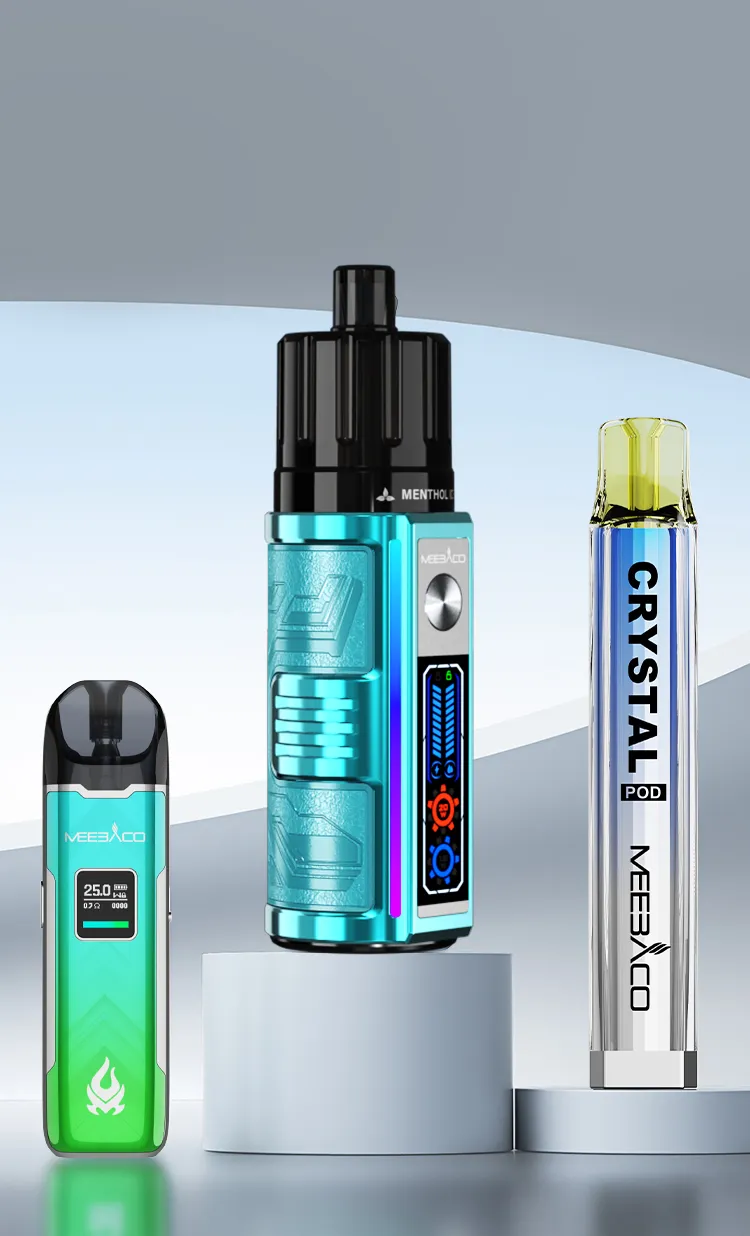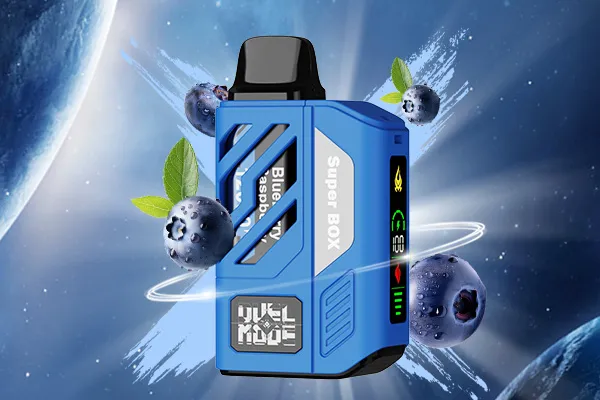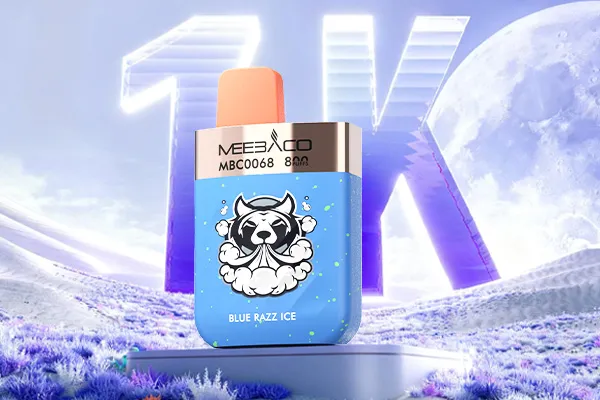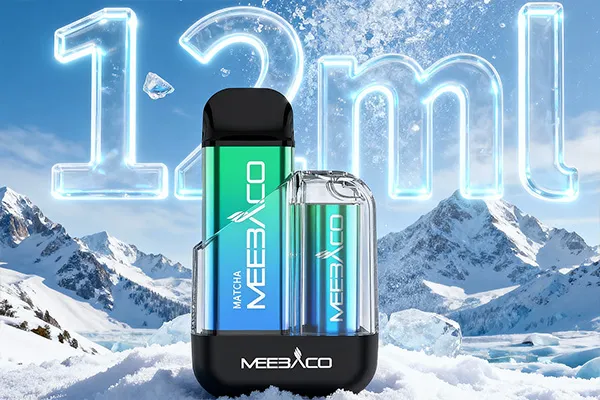You can master the latest information, new product , exhibition, promotion, etc
In the fast-paced world of vaping, innovation never stops. At the core of every vape device lies a small but critical component: the vape coil (or atomizer coil). This tiny heating element is responsible for transforming e-liquid into inhalable vapor, directly impacting flavor, vapor production, and overall user experience. Today, two dominant coil materials have taken center stage in the vaping community: ceramic coils and cotton coils. As a vaper or retailer, understanding their differences is key to choosing the right product—or guiding customers effectively.
Let’s break down how these coils work, their unique strengths, and which scenarios they’re best suited for.
The Basics: How Vape Coils Work
Before diving into comparisons, it’s essential to grasp the role of a vape coil. A typical coil consists of a heating wire (often Kanthal, stainless steel, or nichrome) wrapped around an absorbent material. When powered by a battery, the wire heats up, vaporizing the e-liquid soaked into the absorbent material. The absorbent “wicking” material is where ceramic and cotton coils diverge dramatically.
Ceramic Coils: Precision and Consistency
Ceramic coils use a porous ceramic material as the wick. This material, often processed to enhance its heat resistance and surface area, has gained popularity for its ability to deliver stable, long-lasting performance.
How Ceramic Coils Perform
Even Heating: Ceramic’s low thermal conductivity ensures heat distributes uniformly across the coil, reducing hot spots that can cause burning or uneven vaporization. This results in smoother, more consistent vapor.
Enhanced Flavor Retention: The porous structure of ceramic absorbs e-liquid slowly and steadily, preventing “floods” (excess liquid overwhelming the coil) and allowing for gradual, controlled release of flavor compounds. Many users report brighter, more accurate flavor profiles compared to cotton.
Longer Lifespan: Ceramic is highly resistant to degradation. Unlike organic materials, it doesn’t break down or char over time, even with frequent use. This means fewer coil replacements and lower long-term costs for vapers.
Reduced Dry Hits: Ceramic’s efficient wicking minimizes the risk of the coil overheating without e-liquid—a common issue with cotton coils known as “dry hits,” which produce a harsh, unpleasant taste.
Considerations with Ceramic Coils
While ceramic excels in consistency, it’s not without trade-offs. Some vapers note that ceramic’s slow absorption can slightly delay the “ramp-up time” (the seconds between inhaling and tasting full flavor) compared to cotton. Additionally, high-end ceramic coils may come at a slightly higher upfront cost, though this is offset by their durability.
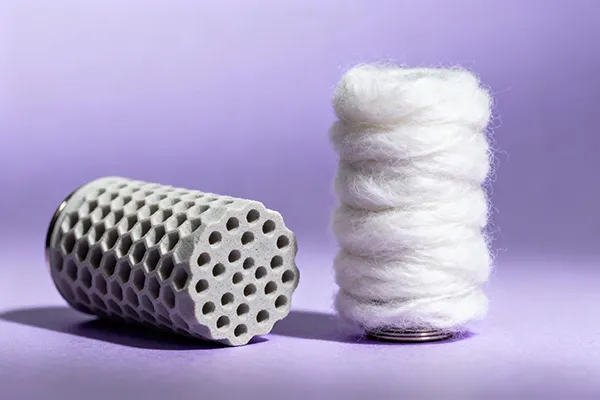
Cotton Coils: Tradition and Flavor Intensity
Cotton coils rely on organic cotton as the wicking material—a classic choice rooted in early vape designs. Cotton’s natural absorbency and simplicity make it a favorite among vapers who prioritize flavor purity.
How Cotton Coils Perform
Rapid Heat Transfer: Cotton’s low density and high porosity allow it to soak up e-liquid quickly and transfer heat from the coil to the liquid almost instantly. This results in a near-instantaneous “ramp-up,” delivering intense flavor from the first puff.
Superior Flavor Authenticity: Many vapers swear by cotton’s ability to preserve the “true” taste of e-liquids. Since cotton doesn’t interact chemically with the liquid (unlike some ceramics), it’s ideal for complex, fruity, or menthol blends where nuance matters.
Cost-Effective: Cotton is inexpensive and widely available, making cotton coils generally more affordable upfront. This makes them a popular choice for budget-conscious vapers or those who cycle through coils frequently.
Considerations with Cotton Coils
Cotton’s strengths are also its weaknesses. Its high absorbency means cotton coils are prone to flooding (too much e-liquid saturating the wick), which can cause gurgling, spitting, or weak vapor. They also degrade faster: exposure to heat, oxygen, and e-liquid acids breaks down cotton over time, leading to burnt tastes and shorter lifespan (typically 1–2 weeks, vs. 3–4 weeks for ceramic). Dry hits are another common issue if the user takes long draws without sufficient e-liquid.
Ceramic Coil vs Cotton Coil: Which Should You Choose?
The answer depends on your priorities as a vaper:
Choose Ceramic Coils If:
You value long-term consistency (stable flavor, vapor production, and temperature).
You want fewer coil replacements (cost-effective over time).
You dislike harsh dry hits or burnt tastes.
You use high VG (vegetable glycerin) e-liquids (thicker liquids benefit from ceramic’s slow wicking).
Choose Cotton Coils If:
You prioritize instant, intense flavor (especially with delicate or complex e-liquids).
You prefer a lower upfront cost and don’t mind replacing coils more frequently.
You use high PG (propylene glycol) e-liquids (thinner liquids wick quickly without flooding).
The Future of Vape Coils: Blending Innovation
As vape technology advances, some vape manufacturers are experimenting with hybrid coils—combining ceramic’s stability with cotton’s flavor intensity. These “ceramic-wrapped cotton” or “porous ceramic-infused” coils aim to deliver the best of both worlds. While still emerging, they represent an exciting frontier for vapers seeking next-level performance.
Ceramic and cotton coils each have distinct advantages, and the “better” option ultimately hinges on your vaping style, preferences, and needs. For vapers craving reliability and durability, ceramic leads the way. For those who live for bold, authentic flavor, cotton remains unbeatable.
Whichever you choose, one thing is clear: the evolution of vape coils—from basic cotton to advanced ceramics—continues to redefine what’s possible in vaping. Stay curious, test different options, and let your taste buds (and device) guide you.


